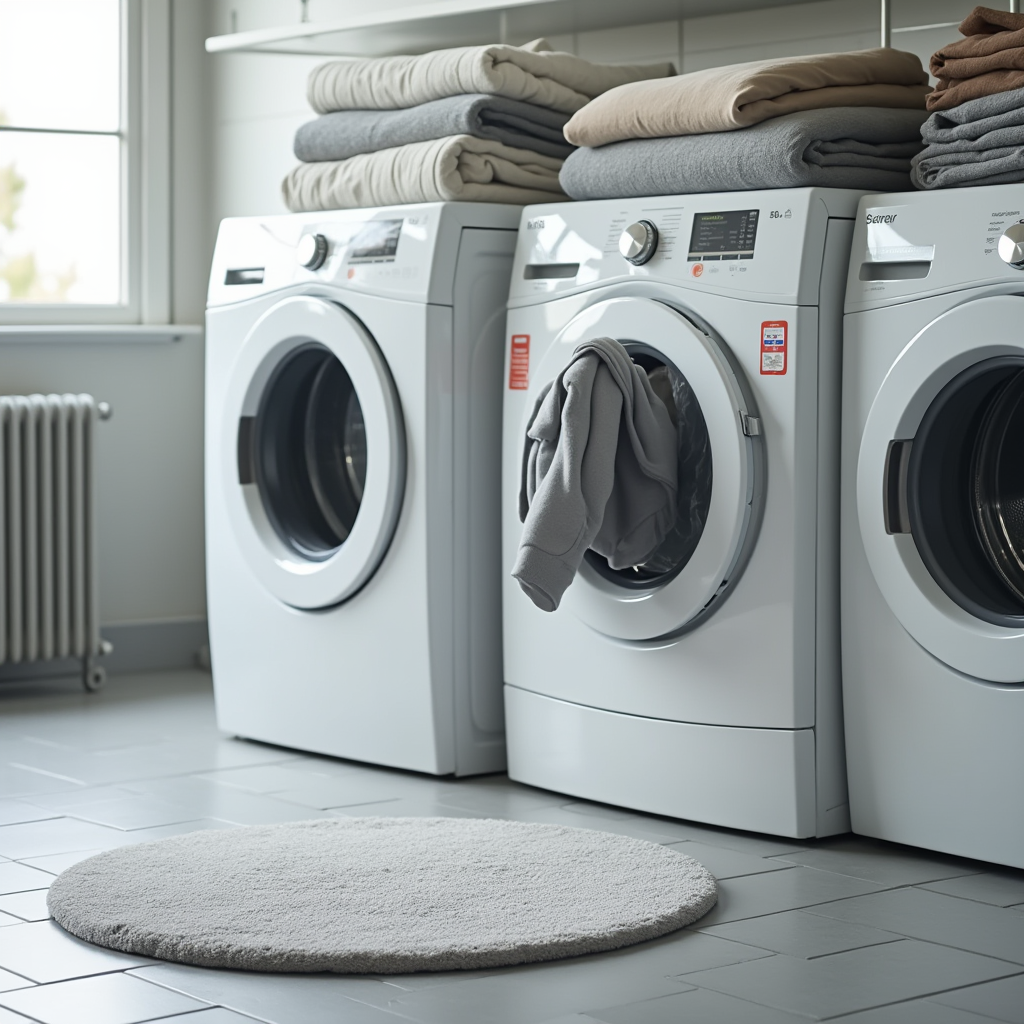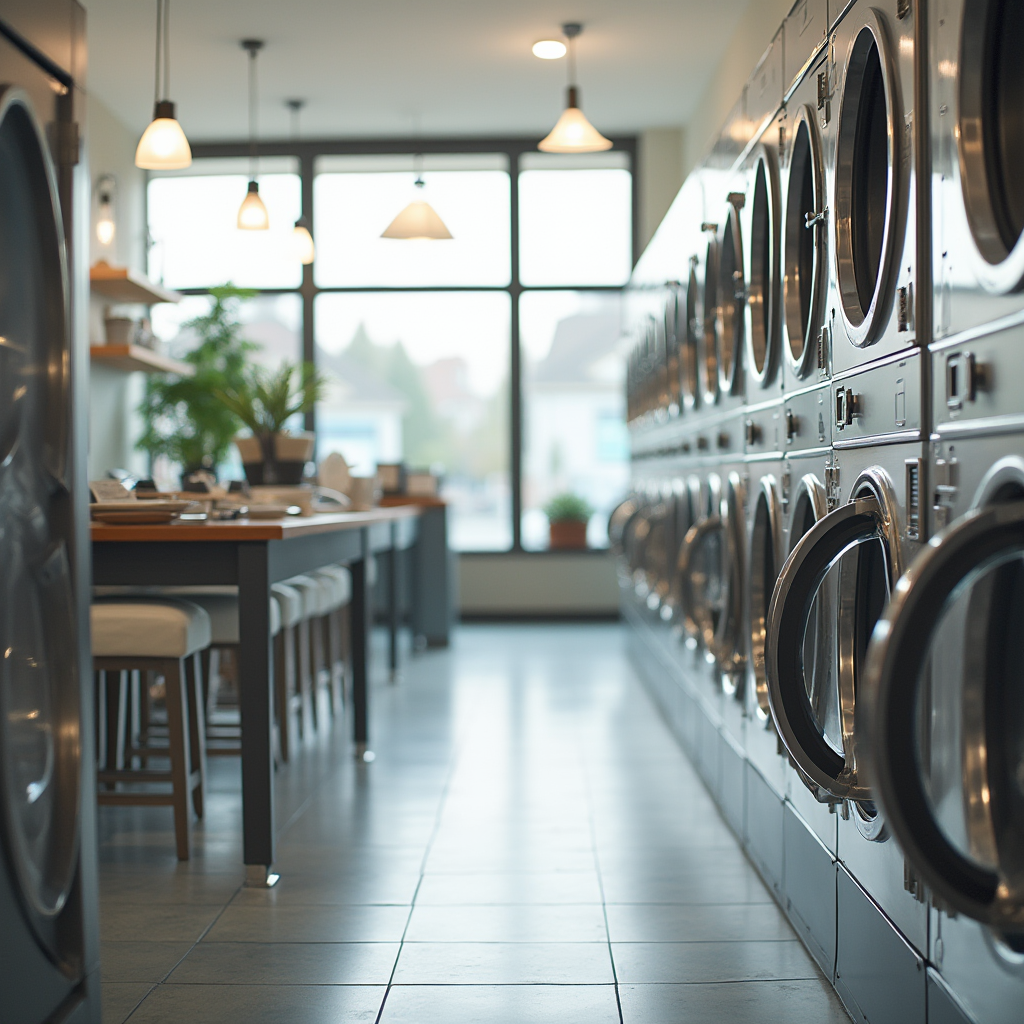Are laundromats as profitable as they seem? Owning a laundromat can be a lucrative venture with steady income potential, especially in areas with consistent demand. But the big question remains: Is owning a laundromat profitable enough to justify the initial investment and ongoing expenses? Factors like location, equipment quality, and the specific business model play crucial roles in determining profitability. In this guide, we’ll explore these key aspects to answer your most pressing questions about how profitable laundromats really are and what it takes to succeed in this industry.
Table of Contents
1. What Makes Laundromats Profitable?
High Demand for Laundry Services
Laundromats cater to a constant, everyday need: clean clothes. In urban areas with a high population of renters, students, and busy professionals, laundromats thrive due to consistent demand. Economic downturns don’t significantly impact this demand, making laundromats relatively recession-proof compared to many other businesses.
Low Labor Requirements
Unlike retail or restaurant businesses, laundromats typically don’t require extensive staffing. Many laundromats are self-service, allowing them to operate efficiently with just one or two employees or, in some cases, none at all. This minimizes labor costs, which is one of the largest expenses in most businesses.
Revenue Consistency
Laundromats provide a steady income stream, especially in areas where customers rely on laundromat services regularly. Whether through coin-operated machines or mobile payment systems, laundromat owners benefit from frequent, small transactions that add up to reliable revenue.
2. Profitability Overview
Return on Investment (ROI)
On average, laundromats achieve an ROI of 20% to 35%, making them attractive to investors and small business owners alike. This high ROI is due to lower labor costs, recurring demand, and the essential nature of laundry services, which tend to remain stable in demand regardless of economic fluctuations.
Monthly Earnings Potential
Depending on location and size, laundromats can yield significant monthly and annual profits. Successful laundromats often see annual earnings ranging from $15,000 to $200,000, with a profit margin of 20% to 30%. Establishing a loyal customer base and managing expenses effectively contribute to these healthy profit margins.
Low Maintenance Needs
Once established, laundromats generally require low maintenance. Self-service laundromats, in particular, operate with minimal upkeep beyond occasional equipment repairs, cleaning, and coin or payment system maintenance. This allows for a more passive income stream, especially when machines and equipment are in good working condition.
3. Key Factors That Impact Laundromat Profitability
Prime Location Selection
Choosing a location is critical for laundromat profitability. Successful laundromats are often situated in densely populated residential areas with high foot traffic and a strong customer base, such as near apartment complexes or universities. Customers are more likely to choose laundromats within a mile of their residence, making proximity crucial for steady business.
Investment in Quality Equipment
Investing in high-efficiency machines not only attracts customers but also minimizes repair and maintenance costs over time. Newer machines may use less water and electricity, which directly contributes to cost savings. Additionally, reliable equipment enhances customer satisfaction and repeat visits.
Customer Service and Additional Amenities
Providing quality customer service and offering added amenities, such as folding tables, vending machines, and free Wi-Fi, can improve customer experience and loyalty. Some laundromats also offer value-added services like wash-and-fold or pickup and delivery, which cater to customers looking for convenience and can significantly boost profitability.
Initial Investment Requirements
Starting a laundromat generally requires a substantial initial investment, which can range from $100,000 to $500,000, depending on factors like location, scale, and features offered. This investment covers equipment, leasing, and renovations. Planning carefully and budgeting for this startup phase is essential for ensuring future profitability.
Market Competition
Assessing competition is crucial before starting a laundromat. Areas with numerous laundromats may be saturated, impacting profitability for newcomers. Market research can help identify underserved areas with strong potential demand and minimal competition, offering better odds for success.
4. Typical Expenses and Financial Considerations
Utility Costs
Laundromats are energy-intensive businesses, with water, electricity, and gas costs forming a significant portion of ongoing expenses. Choosing energy-efficient machines and optimizing their usage can help manage these costs.
Lease or Mortgage Costs
Rent or mortgage payments are a major component of a laundromat’s fixed costs. Leasing may be preferable for new owners due to lower upfront costs, while purchasing property could yield long-term savings. Location and space size directly impact these costs, so careful site selection is essential.
Equipment Maintenance
Routine maintenance and periodic replacement of machines are necessary to keep operations running smoothly. Laundromat owners typically allocate a portion of monthly revenue for maintenance to avoid costly repairs and downtime, which could affect customer retention and revenue.
5. Revenue-Boosting Strategies for Laundromat Owners
Expanding Services
Offering additional services can attract a broader customer base and increase revenue. Popular add-ons include wash-and-fold, dry cleaning, and pickup and delivery services. These options cater to customers looking for convenience and help differentiate your laundromat from competitors.
Leveraging Technology
Integrating technology like app-based payments, loyalty programs, and smart machines that notify customers when cycles are complete can enhance the customer experience. These features improve convenience and can encourage repeat business.
Effective Marketing
Marketing is key to attracting and retaining customers. Simple efforts like distributing flyers, using local advertising, and maintaining an active social media presence can generate awareness. Promotions for first-time customers and discounts can also drive initial traffic and build loyalty.
6. How to Calculate the Break-Even Point for a Laundromat
Assessing Fixed vs. Variable Costs
To calculate the break-even point, begin by determining your fixed costs (e.g., rent, loan payments, insurance) and variable costs (e.g., utilities, supplies). Knowing these costs can help estimate how much revenue is needed to cover all expenses and reach profitability.
Estimating Monthly Revenue
Revenue estimates are based on machine usage rates, customer volume, and any additional services offered. Regularly analyzing revenue can help identify profitable periods, service demand, and opportunities for growth.
Calculating Time to Profitability
Once you know the total costs and estimated monthly revenue, you can calculate how long it will take to recover the initial investment. Generally, laundromat owners can expect to break even within three to five years, depending on market demand and effective cost management.
7. Risks and Challenges of Owning a Laundromat
Managing Equipment Downtime
When machines break down, revenue is impacted. To avoid this, maintain a budget for repairs and conduct routine inspections. Well-maintained equipment enhances customer satisfaction and minimizes unexpected expenses.
Addressing Utility Price Fluctuations
Utility costs are variable, and price increases can affect profitability. Energy-efficient equipment and strategies like peak-hour pricing can help mitigate these fluctuations, especially in regions with higher utility costs.
Dealing with Competition
In areas with multiple laundromats, owners may need to differentiate their services through added amenities or competitive pricing. Standing out in a competitive market is essential to maintain a steady stream of customers and ensure profitability.
Conclusion: Is Owning a Laundromat Profitable?
Owning a laundromat can indeed be profitable, offering stable income and high returns on investment, especially when established in a prime location and equipped with reliable machines. With low labor needs, consistent demand, and numerous ways to enhance revenue, laundromats remain an attractive business option. However, careful planning, thorough market research, and diligent management are necessary to maximize profitability and minimize risks. For those prepared to invest in quality, service, and convenience, a laundromat can be a rewarding business venture.










